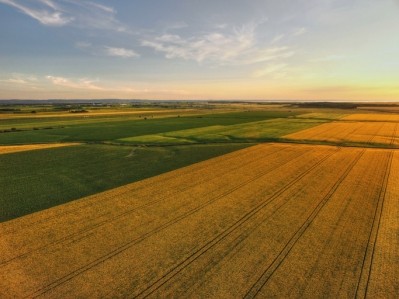Australia: Domestic grain prices likely to stay elevated

“While more wheat and barley is being planted than last year, we are still below average on our plantings. Our concern is that we are still not looking at a great growing season outlook according to forecasts, a factor that we think will lead to lower crop volume and lower exports again,” Rabobank senior grains and oilseeds, said analyst Cheryl Kalisch Gordon, told FeedNavigator.
In a recent industry note on the outlook for Australian grain and oilseeds, Rabobank predicts the country will have a total planted area of 18.4 million hectares in 2019/20 This is up 1% up on last year’s planting, but still down almost 13% on the five-year average. It predicts Australian wheat production to be below 20 million tons in the coming year.
The hottest summer on record and below-average rainfall – on top of two years of below average rainfall – means the eastern states have been experiencing well below to the-lowest-on-record root-zone soil moisture and there has been no widespread autumn break in most areas, said Kalisch Gordon.
The poor planting conditions are not confined to the east of the country, with parts of South Australia having their driest start to the cropping season in 150 years and almost the entire Western Australian cropping belt still waiting for a repeat of last year’s late seasonal break, she said.
It is not all doom and gloom though, said the analyst. In contrast to other areas, Victoria and parts of southern New South Wales are looking at the best start to a winter crop since 2016/17.
However, with Australian grain stocks diminished and the estimated stocks-to-use ratio at more than 15-year lows, this will see the country heading for another year of below-average grain and oilseed exports, said the analyst.
“Low crop production and strong local prices will once again curtail Australia’s export competitiveness in 2019/20, as they had last season.”
The increased use of Black Sea and Argentinian-origin wheat in Australia’s export markets in South East Asia is expected to present a disruption to Australian market positioning when the country’s exportable surpluses do return to average, she added.
“So in the case of wheat, where we would typically export, on average, 17 million tons, this year, that we are just finishing off, it looks, however, like it will be 9-10m tons. For the coming year, we might see 11-12m tons of wheat exports, if we are lucky,” she said.
Prices
The Rabobank report forecasts that Australian grain prices will remain in the higher ranges over the coming year due to the lower forecast local production, depleted local stocks and some support for global cereal pricing. Australian prices should remain above five-year averages.
East coast Australia wheat prices will continue to trade at above-average basis levels while stocks rebuild and another below-average harvest volume is on the cards, said the analyst.
“It is really the feed sector that has been driving the very tight balance sheet that we’ve had.
“The local pricing across the East coast of Australia has really driven pricing across the whole country and it has been based on strong feed demand, with good lamb meat prices in particular.
“Such has been the demand on the East coast that it has outstripped supply and we have seen ships of grain – wheat and barley - coming from Western Australia, which had an excellent harvest last year - 2018/19.”
However, the analysts do not have the same optimism for the coming this year about Western Australia being able to match that level of supply, she told this publication.
In Western Australia, Rabobank expects a 5% year-on-year decline in area planted. Despite that cropping region’s most valuable harvest in history – due to high yields and elevated prices – last year, it forecasts that farmers there will take a conservative approach to winter planting, given the dry conditions and uncertain outlook there.
“We will continue to have elevated grain prices for the feed sector in Australia, so for anyone who is producing chicken, eggs, pork, lamb and beef, the prices are high and [will prove] a challenge for their margins,” added Kalisch Gordon.
For barley, while increased planting will help moderate prices this year, the prospects for low production and the expectation that China may need to return to the Australian market for barley for malting in the second half of this year are likely to see prices gain again from current levels, she said.
More soybean meal imports likely
Canola is the crop that will fall this most in terms of planting - one reason being because of the lower global oilseed prices, she said. “And even the plantings that have gone ahead are not getting the rain they need.”
Australia is not a huge market for canola meal, because the country exports most of its canola. There has been a marked increase in the level of soybean meal imports from Argentina during the drought.
“With the outlook where it is and particularly with poultry producers needing to have a fixed price point at the supermarket, they will do whatever they can to maintain margins, and that may likely involve continued use of soybean meal imports,” she said.












